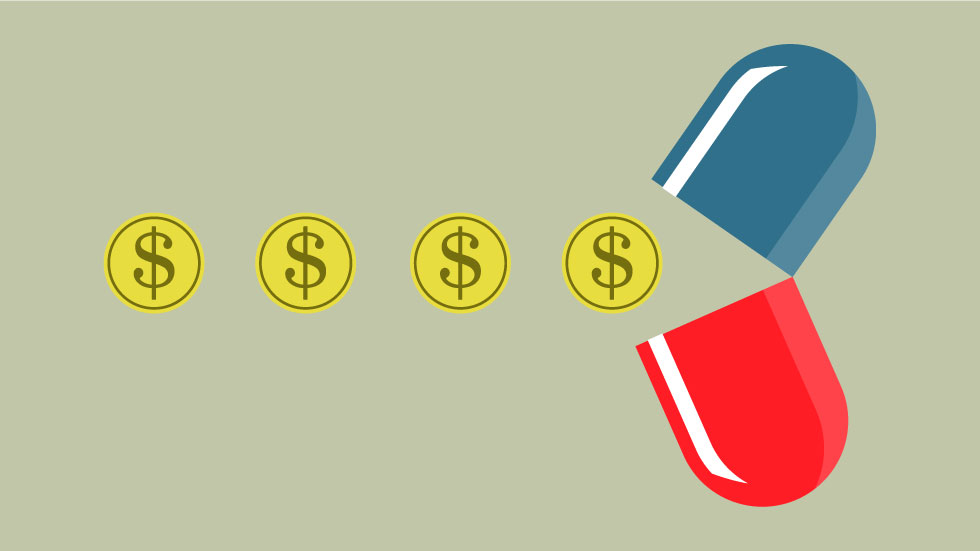Drug Pricing: Republicans' Budget Bill Targets Middlemen

Table of Contents
Who are the Pharmaceutical Middlemen Targeted by the Bill?
The Republican budget bill aims to lower drug prices by addressing the influence of pharmaceutical middlemen. But who are these middlemen? They are the intermediaries in the complex drug distribution process, significantly impacting the final cost consumers pay. Key players include Pharmacy Benefit Managers (PBMs), wholesalers, and other entities.
PBMs act as intermediaries between insurance companies and pharmacies, negotiating drug prices and managing prescription drug benefits. They often negotiate rebates from drug manufacturers, which can lead to lower costs for insurers but not necessarily for patients. Wholesalers purchase drugs from manufacturers and distribute them to pharmacies, marking up prices along the way. This system, while functional, has created opportunities for price increases and reduced transparency, contributing to the high drug pricing problem.
- PBMs negotiating rebates: PBMs' negotiating power allows them to secure rebates from drug manufacturers, but these savings are not always passed on to patients in the form of lower co-pays or out-of-pocket expenses. This opaque system creates concerns about potential conflicts of interest and reduced price transparency.
- Wholesalers' role and potential for price gouging: Wholesalers can significantly influence drug prices due to their control over distribution. Concerns exist about potential price gouging and lack of transparency in their pricing practices.
- Other intermediaries and their influence on the drug supply chain: Other intermediaries, such as specialty pharmacies and group purchasing organizations, also play a role, each adding layers of potential cost increases and complexity to the drug pricing structure.
Key Provisions of the Republican Budget Bill Addressing Drug Pricing
The Republican budget bill proposes several key provisions to curb the influence of pharmaceutical middlemen and lower drug prices. These provisions aim to increase transparency and foster greater competition within the pharmaceutical supply chain.
The bill focuses on enhancing transparency in PBM practices, particularly regarding rebates and fees. Greater transparency would allow for more effective monitoring of pricing strategies and identification of potential abuses. The bill also proposes measures to promote competition among wholesalers, potentially leading to lower acquisition costs for pharmacies and ultimately, consumers.
- Specific legislative actions proposed to regulate PBM practices: The bill likely includes provisions requiring PBMs to disclose rebate information, prohibiting certain practices that inflate drug costs, and enhancing oversight of their operations.
- Measures to promote competition among wholesalers and other distributors: The bill may include initiatives to reduce barriers to entry for new wholesalers, encouraging competition and preventing market consolidation.
- Potential impact on drug manufacturer pricing strategies: The changes could indirectly impact drug manufacturer pricing, forcing them to adopt more competitive pricing strategies to maintain market share.
Potential Benefits and Drawbacks of the Republican Drug Pricing Approach
The Republican approach to drug pricing reform holds the potential for significant benefits but also faces potential drawbacks. The aim is to create a more transparent and competitive market, lowering costs for consumers and taxpayers. Projected cost savings are expected, leading to increased affordability of prescription medications for millions of Americans. However, unintended consequences are possible.
- Projected cost savings for consumers and the government: Reduced PBM fees and increased wholesaler competition could lower the overall cost of prescription drugs, resulting in significant savings for consumers and the government's healthcare programs.
- Potential impact on pharmaceutical company profits and innovation: Lower drug prices could reduce pharmaceutical company profits, potentially affecting their ability to invest in research and development of new drugs.
- Possible unintended consequences, such as drug shortages: Increased regulation might inadvertently disrupt the drug supply chain, leading to temporary shortages of certain medications.
Comparison with Other Drug Pricing Reform Efforts
The Republican bill contrasts with other proposals, particularly Democratic initiatives that focus on allowing Medicare to directly negotiate drug prices with manufacturers. While both approaches aim to reduce drug prices, their strategies differ significantly. The Republican approach focuses on market-based solutions to increase transparency and competition, whereas the Democratic approach seeks direct government intervention in price negotiation. The political landscape surrounding drug pricing reform remains complex, highlighting the challenges of reaching bipartisan consensus.
- Comparison to Democratic proposals for drug price negotiation: Democratic proposals generally focus on allowing the government to negotiate directly with pharmaceutical companies, bypassing the complexities of the current system.
- Analysis of other countries' drug pricing models: Comparing the proposed reforms to drug pricing models in other developed countries can provide valuable insights and potential alternative approaches.
- Discussion of the political hurdles to drug pricing reform: The highly partisan nature of drug pricing debates and the powerful lobbying efforts of pharmaceutical companies create significant political hurdles to passing comprehensive reform legislation.
Conclusion: The Future of Drug Pricing and the Republican Bill's Role
The Republican budget bill's attempt to address high drug prices by targeting pharmaceutical middlemen represents a significant shift in the debate surrounding drug pricing reform. While the potential benefits of increased transparency and competition are considerable, the potential for unintended consequences requires careful consideration. The effectiveness of this approach in significantly lowering costs for consumers remains to be seen. The bill's ultimate success will depend on its specific provisions, implementation, and the broader political context.
Stay informed on the latest developments in drug pricing reform and contact your representatives to advocate for policies that address the high cost of prescription medications. Your voice is crucial in shaping the future of drug pricing in the United States.

Featured Posts
-
 Wildfires In The Uk Devastating Impact On Rare Species
May 13, 2025
Wildfires In The Uk Devastating Impact On Rare Species
May 13, 2025 -
 Local Events Earth Day Initiatives May Day Parade And Junior League Gala
May 13, 2025
Local Events Earth Day Initiatives May Day Parade And Junior League Gala
May 13, 2025 -
 The Real Story Behind Leonardo Di Caprios Recent Relationship Change
May 13, 2025
The Real Story Behind Leonardo Di Caprios Recent Relationship Change
May 13, 2025 -
 Megan Thee Stallions Request For Sanctions After Tory Lanez Deposition
May 13, 2025
Megan Thee Stallions Request For Sanctions After Tory Lanez Deposition
May 13, 2025 -
 Nba Tankathon The Miami Heat Fans Unexpected Addiction
May 13, 2025
Nba Tankathon The Miami Heat Fans Unexpected Addiction
May 13, 2025
